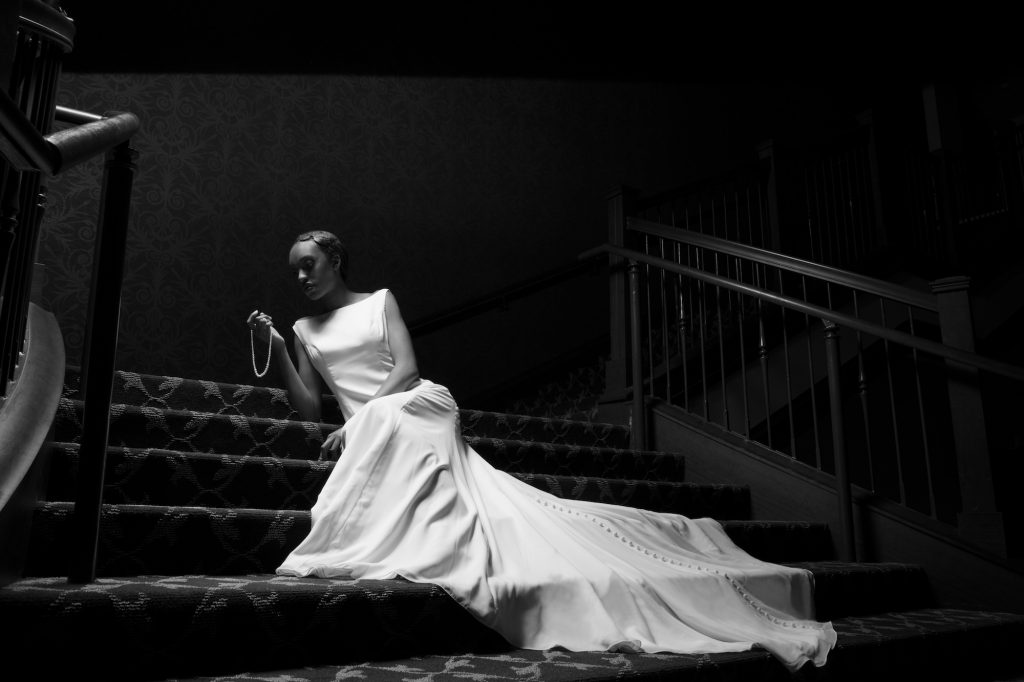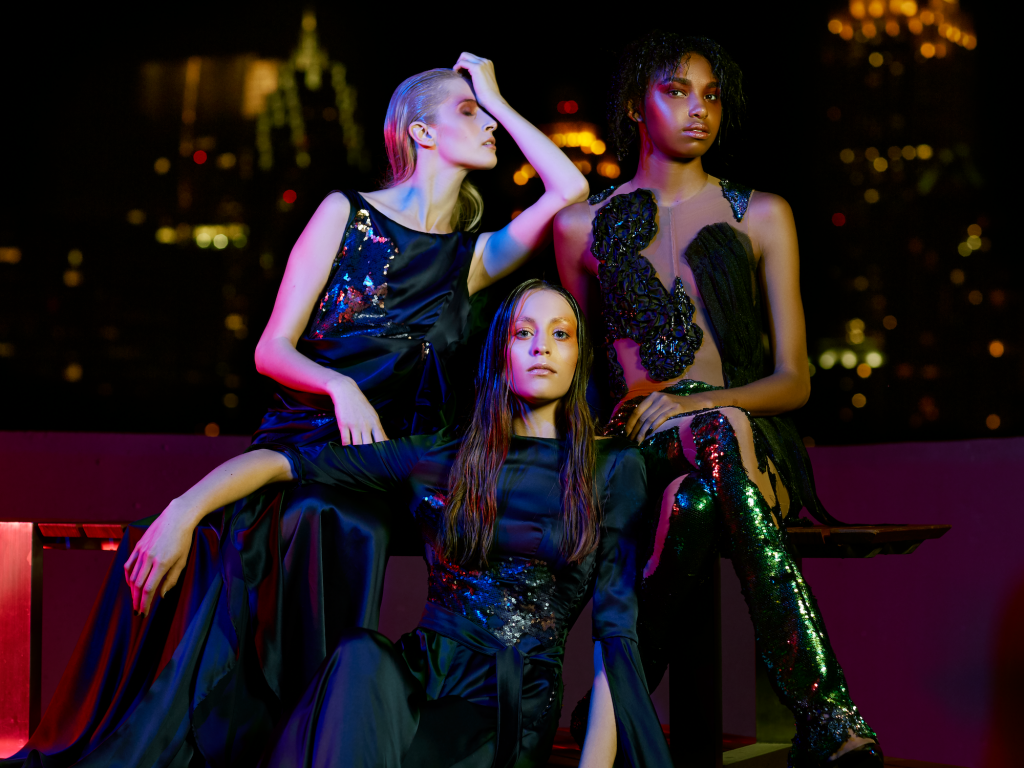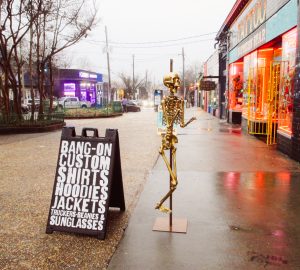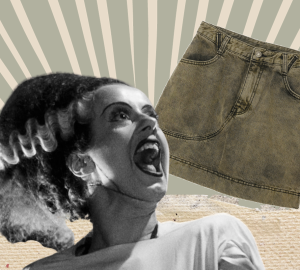By Taylor Bickham

Imagine that you’re seated in front of a stage, draped in beautiful couture clothing. You’re awaiting the tall and slender figures to begin gliding down the runway to showcase the hottest and newest trends in fashion. One by one, the models waltz down the catwalk clad in metallic duster coats, embellished with flecks of bright colors dancing with the lights of the venue. Each model is adorned with colorful faux dreadlocks, reminiscent of the legendary “funkadelic” music pioneer George Clinton, coordinating with their ensembles. Imagine these models are white. Imagine that designer is Marc Jacobs.
For hundreds of years, fashion has paved the way for people all over the world to express themselves. Whether it be through color or structure, anyone from Angela Davis to Lady Gaga can find a way to make a statement through their dress. Mainstream designers often emulate aspects of different cultures and styles in hopes of coming up with something their audiences will deem new, fresh and innovative but fail to realize that while it’s important to normalize different cultures, it’s just as important to include a diverse cast.
During the New York Fashion Week Spring 2017 runway show, the cast of Marc Jacobs’ show consisted of a predominately white group of models sporting a hairstyle indigenous to people of color. Models of color aren’t as prevalent as their white counterparts. According to The Fashion Spot, a fashion blog aimed at millennial women, New York City takes the lead in having the most models of color in Fashion Week shows with an average of 27.9 percent of models being of color. While 27.9 percent is far less than half of the models across New York Fashion Week over the last three years, there’s something to be said about the difference between what’s considered to be trendy and beautiful.
Much like the beauty industry, its equally influential fashion counterpart could benefit tremendously from hiring models of color. “I think it’ll make the industry more diverse. It’ll gain attention from an audience that has long been neglected and lacked support,” said Atlanta-based professional photographer Aamir Edwards. “It’ll also help show they many different sides of the world. Representation matters.” The beauty industry recently welcomed a new empire to the family, Fenty Beauty. The cosmetic line netted $72 million within one month of its launch. Its expansive range of foundation shades is in part responsible for the brand making such a hefty profit of sales. For quite some time, the beauty industry seemed to be under the impression that women of color don’t buy beauty products. According to Racked, not only do women of color purchase makeup, they spend about $7.5 billion on cosmetics and twice as much on skincare, making up about 80 percent more of the purchases than other ethnicities. All they needed were products that would work for them.
The lack of models of color in the fashion industry has partially to do with the fact that designers of color, regardless of gender, are few and far in-between. Designers of color have been excluded from the fashion narrative. “It’s also up to bigger brands and companies to go against what’s expected and give those who are qualified and equally as beautiful a chance they wouldn’t normally get,” said photographer Tyrikus Cunningham. Although the photographer is one of color, he doesn’t usually shoot women of color because he believes that they aren’t as “prevalent” in his hometown and workplace, South Carolina.

Cunningham’s reasoning behind not shooting women of color is the very point at which their exclusion starts. It takes more than big brands including women of color for their beauty to become considered as mainstream as models with Eurocentric features. The cultures of people of color don’t go unnoticed. Caucasian designers often borrow from West Indian, African, Indian, Latino and Asian cultures on a regular basis, but more often than not, opt not to use models from the culture they’re borrowing. “This is in all aspects of the fashion industry,” said Kimberly Jenkins, a professor at Parsons the New School for Design, in an interview with “Fashion Unfiltered.” “There are people who are higher up who want to keep people there who look like them,” she said.
“They say if you have a black face on a magazine cover it won’t sell, but there’s no real evidence for that. It’s lazy,” said Jourdan Dunn, a model who’s been dropped from shows for being black, to the Guardian newspaper’s “The Fashion Magazine.” There’s no evidence of magazines underselling due to the race of the model on the cover because there are so few examples, but what has been proven is that when people of color are represented, they are more inclined to buy. Fenty Beauty products sold out within a week in Sephora stores across America. After that week, makeup brands, including Marc Jacobs and Kylie Cosmetics, rolled out all new shades with ads and Instagram posts featuring women of color. Not only does the representation of women of color create revenue, it pushes brands to understand that there’s an entirely untapped market from which they too could benefit.
Professional Atlanta-based photographer and videographer Jose Will spends a lot of his time shooting women of color. He believes that the “shooting of women of color is needed to broaden the minds of fashion pioneers because women of color weren’t considered amazing and never had the chance to properly be shown until the past fifty to one hundred years.” Women of color have been subject to the appropriation of culture. The very essence of women of color — from giant door-knocker earrings to colorful braids and dreads — have been the inspiration behind many fashion brands. Some would argue that without people of color, certain aspects of fashion and beauty wouldn’t advance.
Showcasing models of color while paying homage to their culture has been a big step for the beauty industry as well as minorities and has proven to be a lucrative move. The ever-evolving fashion world including models of color could prompt the rest of the world to follow suit.






















